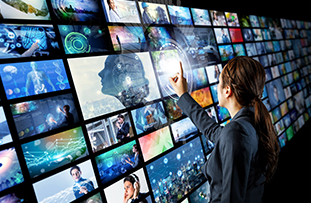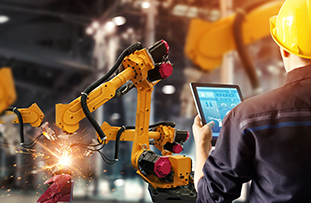By Mark Jules, Global Vice President, Smart Spaces and Video Intelligence at Hitachi
It's no secret that the volume of data being collected everywhere has soared over the past decade. The internet of things (IoT) is taking shape all around us, and data is ubiquitous throughout cities, businesses, transportation systems and infrastructures. As the scale and diversity of data expands, its potential is growing even faster. We’re seeing some of the most compelling applications in smart spaces – digital or physical environments that use technologies to connect data and people for the better. Smart spaces offer exciting opportunities to make communities safer and more efficient, while improving people’s lives.
One of the biggest drivers of the smart spaces trend is video. This article explores how communities and businesses can apply video data, big data analytics, and artificial intelligence (AI) to accelerate their IoT initiatives and cultivate these smart spaces and ecosystems. With the right approach and solutions, they can unlock an exponential return on investment (ROI) from existing infrastructure and, at the same time, have a positive impact on society.
Smart spaces can exist almost anywhere. A smart space could be an individual space, such as an office building where temperature is adjusted by room or floor based on occupancy, or proactive alerts are sent to maintenance teams. A smart space could also encompass an entire smart city where transportation, energy, and security are all connected, sharing data for greater efficiency and improved public safety.
No matter what form smart spaces take, data is the common element that unifies them – and indeed, makes them possible. The richer the data, the more powerful the insights it can provide. Video data is the ultimate sensor data, because cameras are nearly everywhere, capturing nearly everything. That makes intelligent video an especially rich source of IoT insights, and an ideal catalyst for smart spaces.
Empowered by computer vision and AI, video is a rapidly growing source of insights and real-time alerts. Its power has grown tremendously in the past few years, as the accuracy of computer vision has soared over just the past decade. For example, error rates for computer vision image labeling have plunged from 28.5% in 2010 to 2.5% in 20181 – far surpassing human accuracy.
When analytics and video come together, they become a transformative force that can deliver actionable insights for data-driven decisions. With video data now available from almost everywhere in the physical world, video insights can support decisions about traffic and parking, customer behavior and preferences, manufacturing quality assurance, and much more. Some of the new capabilities that are making all this possible include:

What happens when you apply the transformative power of video, big data analytics, and AI to a smart space? You set the stage for an exponential return on investment, taking advantage of a common infrastructure that enables multiple entities to share data insights over a single pane of glass – and unlock multiple outcomes.
For example, cameras are already common in many cities, and they have been steadily collecting video data for years. Their initial focus might have been narrow, such as to improve public safety or manage traffic congestion. However, with a smart city initiative, the city could use the same cameras to track and decrease traffic – and less traffic results in lower emissions. Or those video cameras and infrastructure could be used to collect economic data that may be applied to determine real estate values – and create new business opportunities.
Additionally, organizations involved in a smart city initiative can easily share data between entities, while employing the latest innovations in edge analytics to meet privacy requirements to comply with GDPR and other regulations.
By incorporating cameras into a smart city strategy, the city can improve the quality of life for its citizens while improving economic development opportunities. The city’s return on its original investment can be vastly expanded by using data that’s already being collected in new ways, thus extending the benefits of video insights to a greater majority of its citizens.
It is important to get started, but you don’t need to do it all at once. Start with an identified problem. Look at areas that are costing you money, endangering your citizens or harming your environment. You can address specific problems for specific outcomes, and then build on that foundation.
Smart spaces are springing up everywhere, and the pace of innovation will only continue to accelerate. Today’s technology leaders in the smart spaces boom bring a unique level of expertise to IT solutions such as video analytics, as well as operational technology (OT) – both of which are key to effective IoT solutions. These organizations focus on developing smart spaces and other solutions to make society better – for citizens, businesses, and communities.


